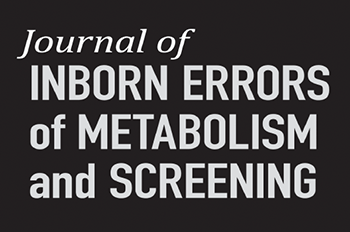Figura 6
Rescue of the auxotrophic,
argE mutant
Escherichia coli strain BW6165 on M9 minimal media by addition of exogenous ornithine or physiological fluids from mouse mutants with hyperornithinemia. A and B,
E coli BW6165 was cultured in microtiter wells that contained M9 minimal glucose media and wild-type urine (panel A) or serum (panel B) that had been spiked with various concentrations of ornithine, as indicated. In both standard assays, rescue of bacterial growth was proportional to the concentration of ornithine supplied. In panels C and D,
E coli BW6165 was cultured in microtiter wells that contained M9 minimal glucose media and urine or serum, respectively, from mice with the 5 genotypes indicated. In both experimental assays,
rhg/Oat∆ urine or serum samples rescued more growth than
rhg/rhg samples, but although urine from
+/+. +/rhg, or
+/Oat∆ mice rescued no bacterial growth in these cultures, serum samples from wild-type mice with these genotypes sometimes stimulated modest increases in turbidity (eg, see
+/rhg culture in panel D). Similar results were obtained in microtiter culture experiments that used
E coli strain CAG12185 (see
Figure 3). E and F, Standard curves relating the growth of
E coli strain BW6165 to known concentrations of ornithine added in wild-type mouse urine (panel E) or serum (panel F), based on the average of 3 turbidity readings taken at 48 hours of incubation in the same assays shown in panels A and B, respectively. A 3-parameter sigmoidal logistic regression was generated from the plotted values to produce an equation relating ornithine concentration to growth. With this equation, bacterial growth observed in the experimental assays of mutant (
rhg/rhg or
rhg/Oat∆) urine (panel C) or serum (panel D) can be interpreted as ornithine concentrations in the respective physiological fluid samples. From the standard curve shown in panel E, the ornithine concentration in urine from mutant
rhg/rhg mice was 3.4 ± 0.2 mmol/L (N = 3) and from
rhg/Oat∆ mice was 4.7 ± 0.4 mmol/L (N = 3), in close agreement with values determined using
E coli strain CAG12185 (see text). From the standard curve shown in panel F, the ornithine concentrations in mutant serum samples were found to be 1015 ± 35 µmol/L for
rhg/rhg (N = 3) and 1139 ± 69 µmol/L for
rhg/Oat∆ serum (N = 3), again in good agreement with values determined using
E coli CAG12185 and with values measured directly by Bisaillon et al
10 (see text).

 Auxotrophy-Based Detection of Hyperornithinemia in Mouse Blood and Urine
Auxotrophy-Based Detection of Hyperornithinemia in Mouse Blood and Urine





